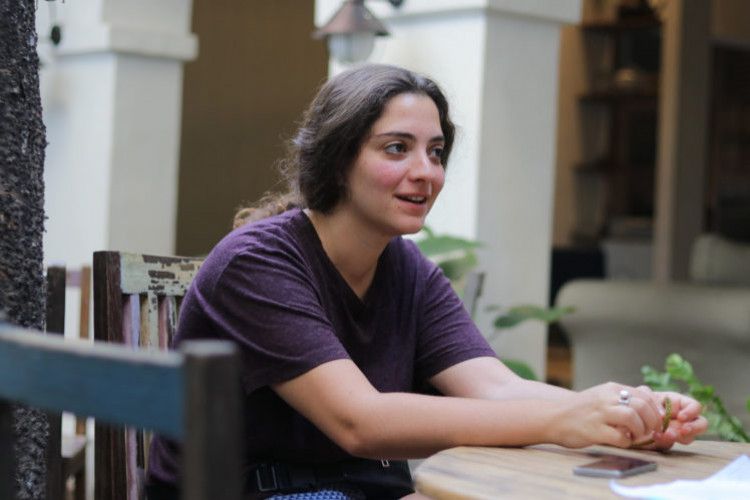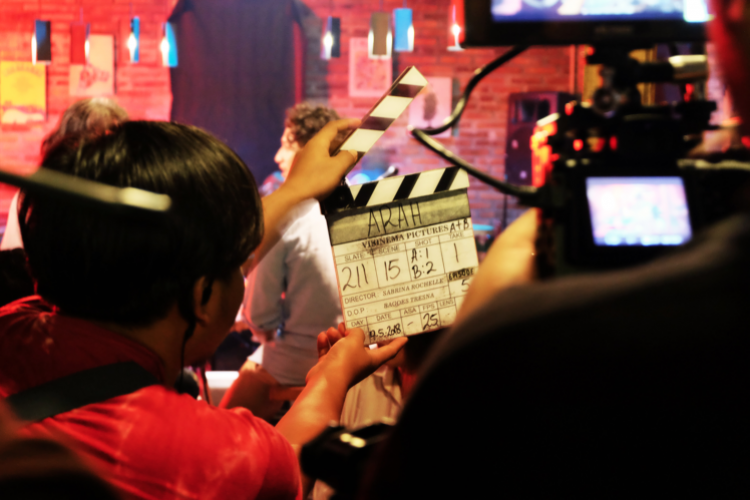History Illustrated with Peter Van Dongen
Muhammad Hilmi (H) talks to Peter Van Dongen (P), graphic novelist.
by Ken Jenie
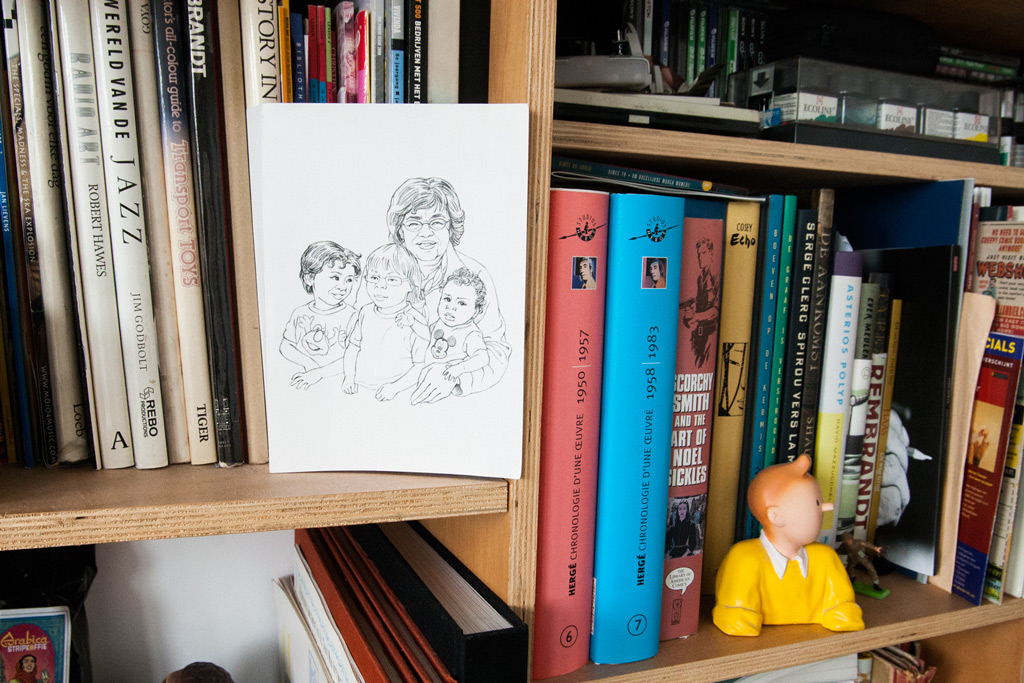
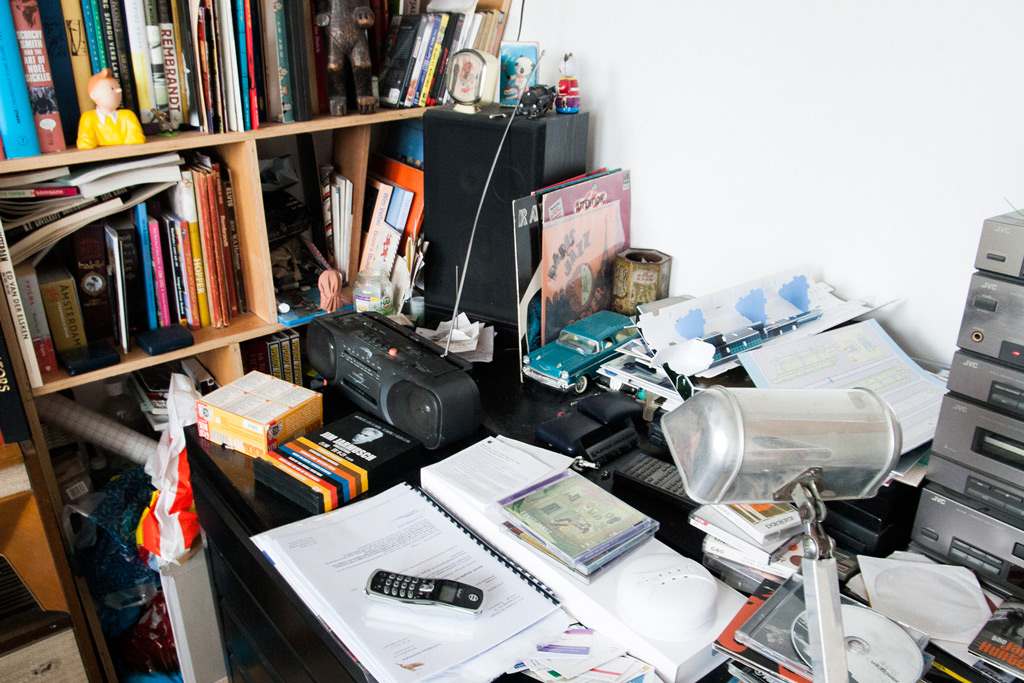
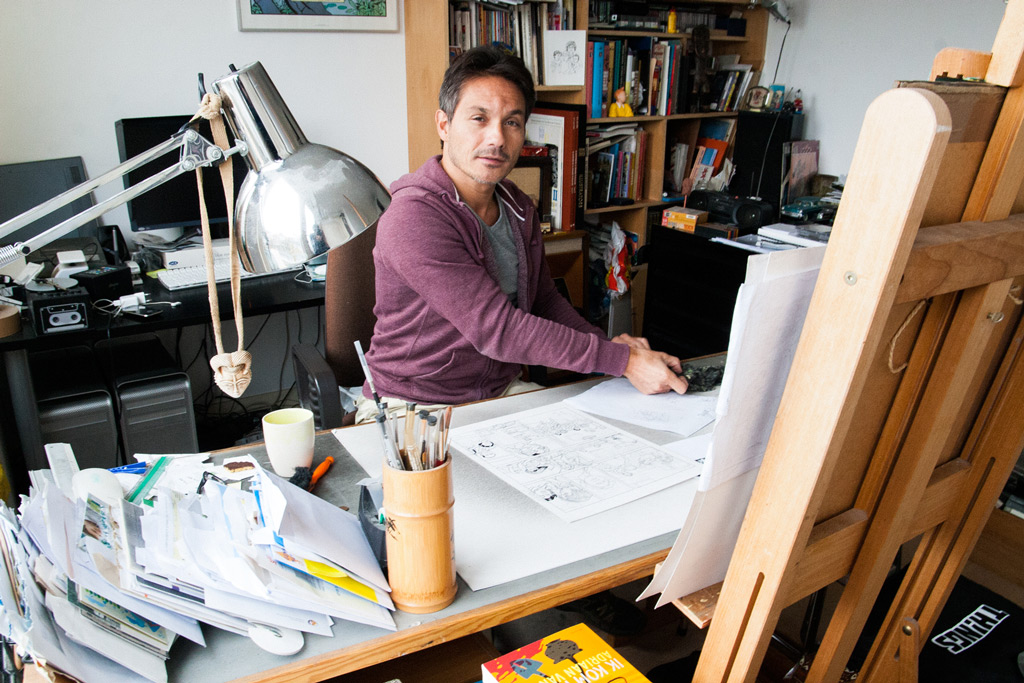
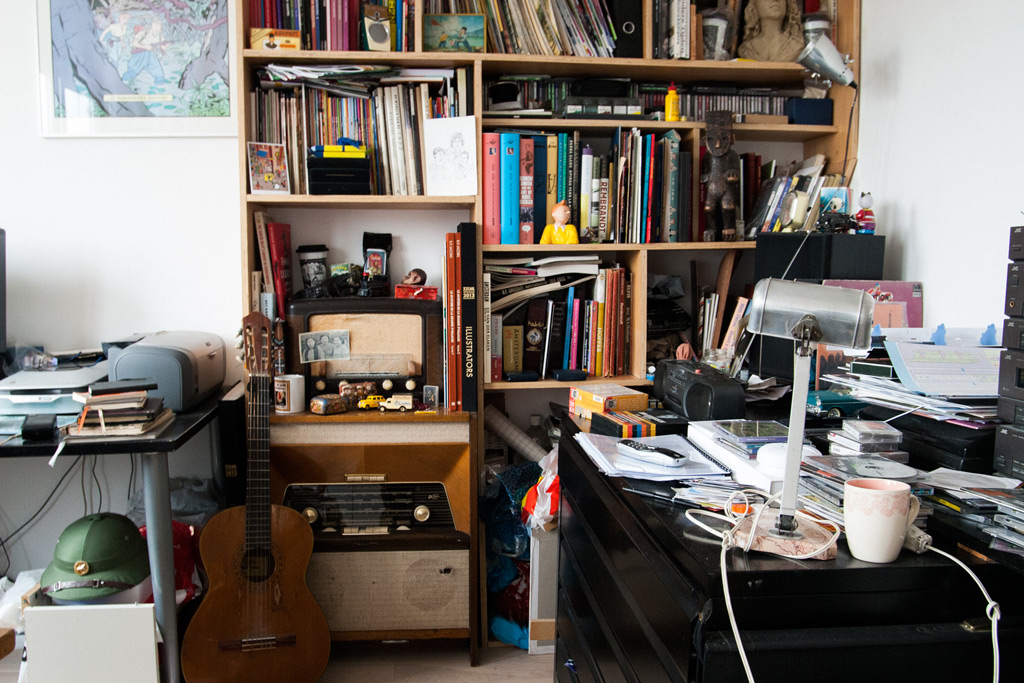
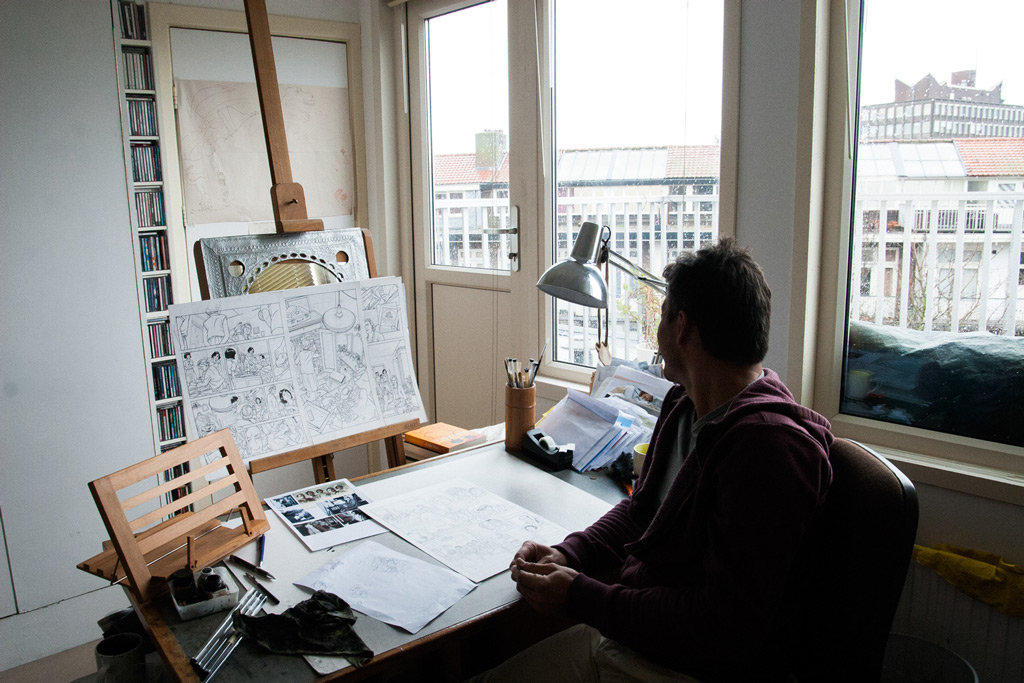
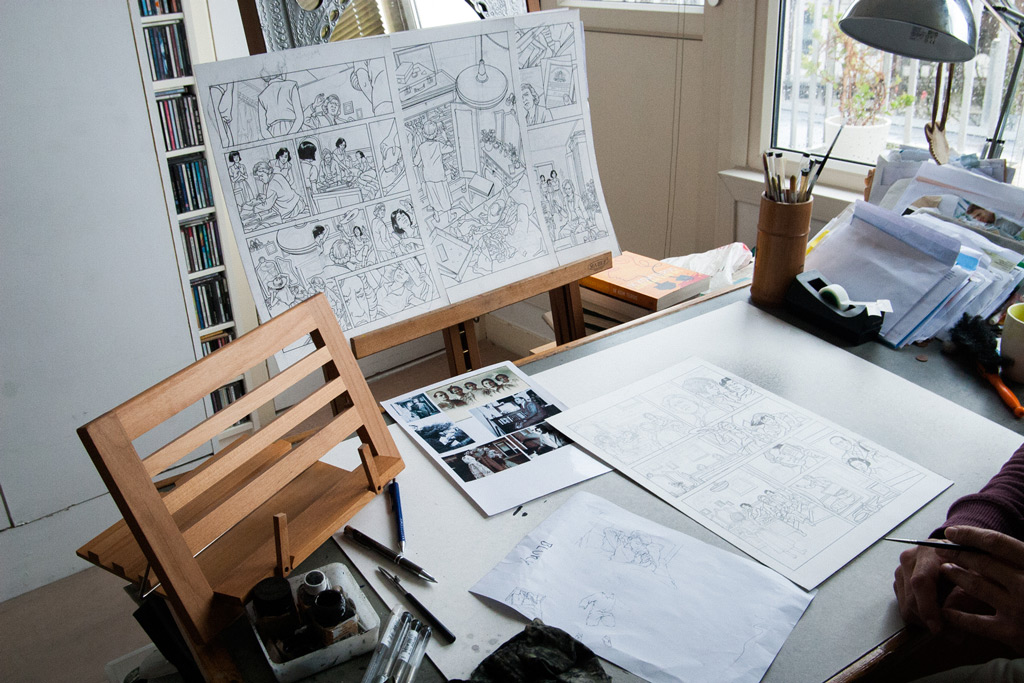
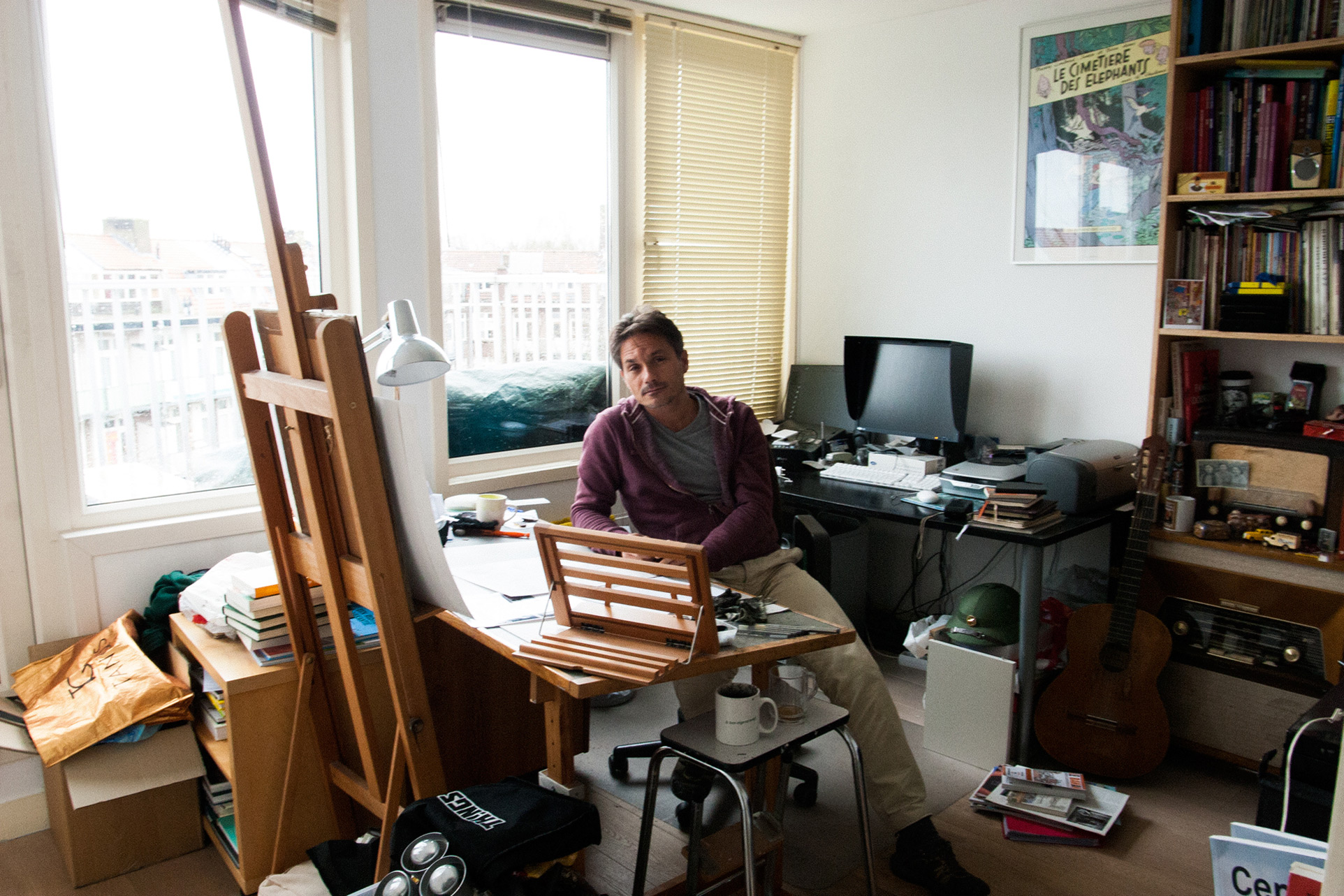
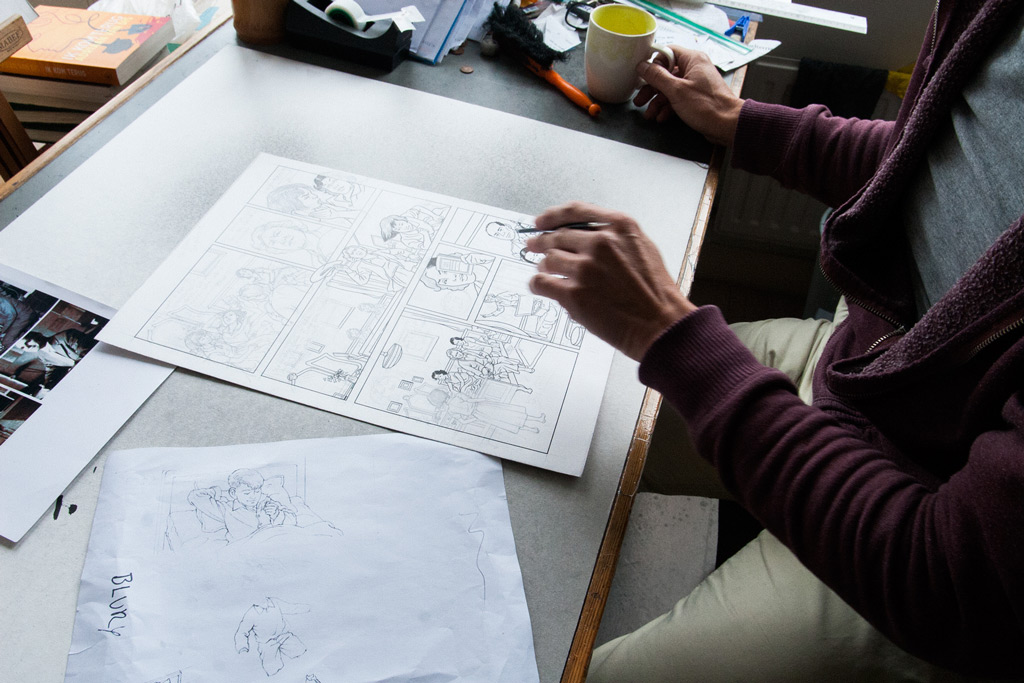
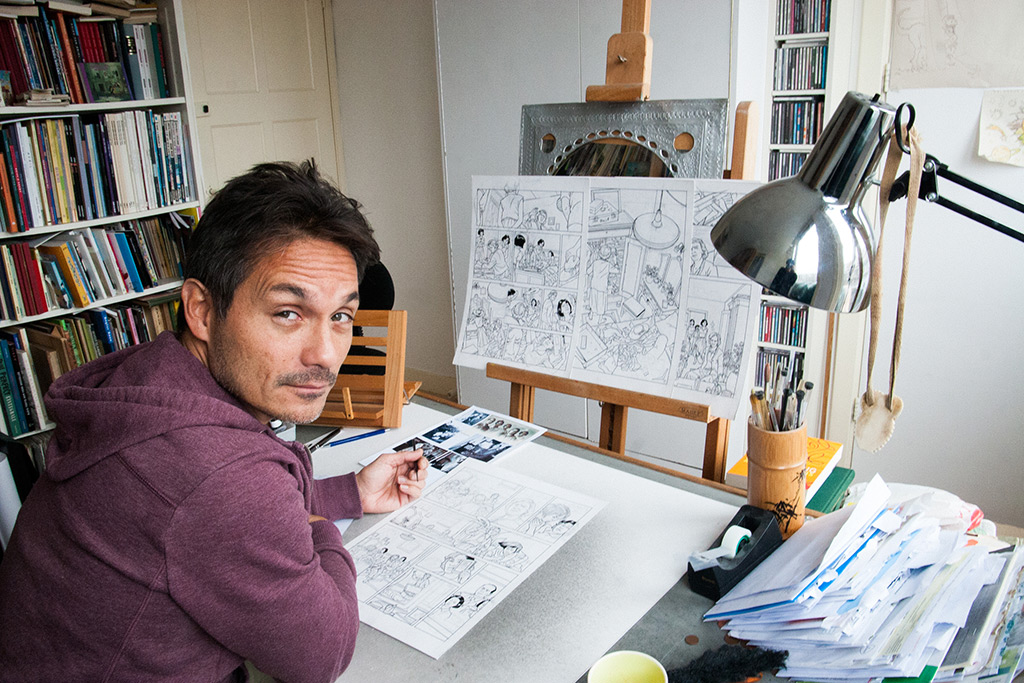
H
What’s your favorite comic from your childhood?
P
From my earliest childhood, I remember myself reading Tintin and another Belgian comic so called Suske en Wiske from Willie van der Steen
H
You graduated as an advertising artist, how did you get into comic world?
P
When I was 14 years old (1981) my guitar teacher introduced me to a local Dutch comic artist known as Willem Vleeschouwer. He was more less influenced by Franquin and other French/Belgian artists who were working for Spirou magazine. He took me by the hand into the Dutch comic world. My first commercial jobs were in commission of his clients when Willem was too busy.
H
It seems like your illustration always came out as a historical portrayal of society, even on your first comic, Muizentheater. Why did you choose this path over many other genres available?
P
Because I’m really interested in recent history of the 20th century and how it effected relations between ordinary people. I guess Tintin’s Blue Lotus is a main influence. The way Herge told and showed this story, having it located in Shanghai in the 1930s, had a enormous impact on me. I realized it was possible to tell a serious story in a comic. Also the movie Once Upon A Time in America by Sergio Leone – New York in the 1920 with all his immigrants from Europe.
H
Any personal reasons behind the making of Rampokan Jawa and Celebes?
P
Yes! Because my mother and grandparents comes/came from Indonesia/Hindia Belanda. From my youngest days I heard a couple of stories about their home country: from Ternate, Makassar and also some about my grandfather who was beheaded by the Japanese in World War 2.
I especially would like to mention this story of my mother: the city of Makassar was bombed by the Dutch army during the Agressie Militair, and my mother along with her two sisters and (widow) mother had to hide for four days underneath a bed. Still she remembers the whistle sound and explosions of the grenades whom were shot by the navy (later I found out during my research that it were not the Dutch troops but the Indonesian navy who was bombing the city, August 1950). This story was actually the reason to start with this project that became Rampokan.
H
How did you do the research for your comic, Rampokan Jawa and Celebes?
P
I started with my research in 1991, years before Google and Youtube etc. I simply went to the library to find books, documentaries about this era and about Indonesia/Hindia Belanda in the past and present. Novels; historical (photo)books. I was visiting for instance archives specialized in old colonial photo albums of Celebes/Makassar At the Tropical Museum Amsterdam. And in 1992 I went for the first time to Indonesia to get a better picture of it all. To get a feeling with the country, although I knew it was not Indonesia in 1946 of course. But still you can find lots of thing that reminds of the late Dutch era, for instance in the architecture.
H
Do you find any trouble regarding “Rampokan Jawa and Celebes” due to its relation to Dutch’s past colonialism history?
P
Yes, I had some, but I heard this only a couple of times in the very beginning in 1998/99, from others or due some publications, most of the time related to old veterans who felt themselves attacked again: partly the story tells about this misbehavior of the Dutch military. It is still a delicate topic in the Dutch media.
H
What’s your personal view about the colonialism itself?
P
What can I say? From my view it is dreadful. But colonialism was, in those days, just a common thing. Most of all the rich western nations had these colonies around the world for hundreds of years. The same with slavery, it was just accepted as a western need. Hardly anybody did care about slavery in those days. It should have been ‘nobody’ of course. A lack of empathy; a feeling of superiority.
To me it was a surprise to discover that most of the Dutchmen, who had been taken prisoners for years by the Japanese during World War 2 in Indonesia, under very bad circumstances, believed that after the capitulation of Japan they could live again as the days before: as nothing was changed during these years. They thought the people of Indonesia were not ready yet to take over and they really thought they belonged there. One thing is kind of sad of course, because for a lot of them (orang Indo’s) it was their home country as well, born and raised, for generations. Many people were forced to moved to other and safer countries in the 1950s, as my widow grandmother and her three daughters did. In fact I am a product of colonialism.
H
It’s quite a long time to have your “Rampokan” comic to arrive here, any story behind that?
P
Actually already in 2005 only Rampokan: Jawa was published in Indonesia by Pustaka Primatama. After some years it was sold out and the follow up Celebes was never published. So, when I was in Jakarta, almost two years ago for the Adventure Documentary Festival, I had a meeting with Gramedia Publisher to discuss about a new edition of both albums. The result is here! And I have to mention Surjorimba Suroto in this. His interview with me in Koran Tempo (2004 or 2005) helped me a lot.
H
What’s your opinion on Indonesian comic scene?
P
Alive and kicking. What I have seen at Popcon Asia and what I ‘ve got as a present surprised me really. There are so many good artists in different styles. Manga, American and European style as well, but each with an Indonesian/Asian flavor I think. Of course I knew Motulz and Tita already since 2002, and after my latest visits to Indonesia I met a couple talented artists too such as Apri, Sandy, Sheila and many more. So my impression is very positive despite of the small market. But most of all the audience was such a blend of young and old and men/women, boys and girls. Come to Holland and you’ll see on comic events mostly middle age white men. No future I ‘m afraid.
H
In the latest campaign of the recently elected president of Indonesia, one of the most viral images was Jokowi (current Indonesia president) traveling across Indonesia on a Herge-inspired cartoon, as a fellow fan of Herge, what do you think about this? Do you agree that Herge’s style has the ability to capture the ideal image of the society, especially a crowded one?
P
Yes, I ‘m aware of this campaign, I had seen some during my last trip to Jakarta and Bandung. Looks nice and familiar of course. Both we have the same inspiration: the Clear Line of Herge. That’s the secret and power of his style: simplify complicated topics, but even the storyline has to be told in this way – if it is about politics, war or a thriller, you should read it as a page turner. This style is so friendly to the reader. You ‘ll see what you get because of its clearness.
H
Any story on why you still do your comics manually?
P
Simple: I ‘m not really into drawing on a computer. Not yet, but who knows in the future. Well, the coloring I do already for years in Photoshop, but thats all. And where is your original artwork if you only work with a computer?At least I ‘ve got my original black and white ink pages!
H
What are your current and future projects?
P
I’m working now for years on a adaptation of a novel from Dutch writer Adriaan van Dis, so called ‘Familieziek’. It’s about a family who had left Indonesia in the late 1940s to Holland finding themselves a new home after the colonial episode. It has to be ready in about 2 years.









